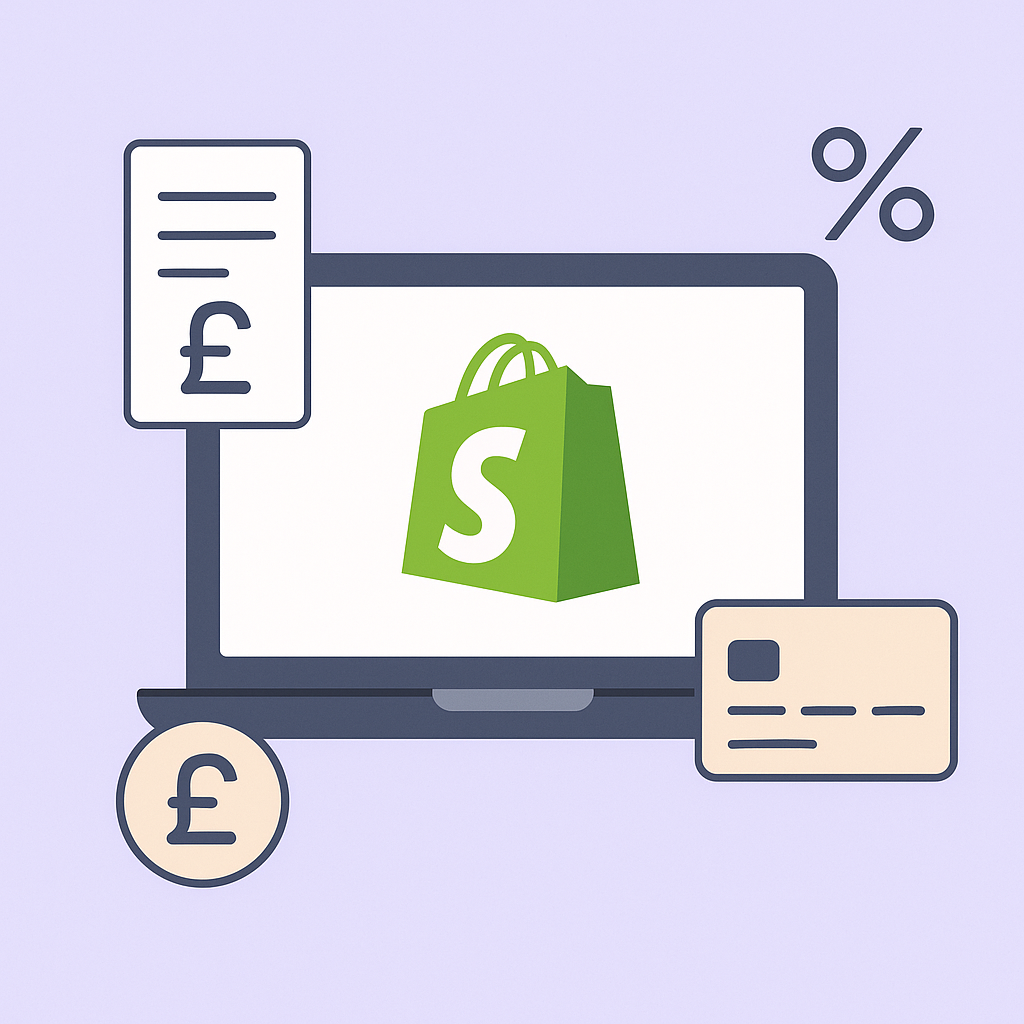Introduction
Shopify might advertise simple monthly pricing, but many UK merchants are surprised by the actual charges they face once the store goes live. Beyond plan fees and visible payment costs, hidden charges—like conversion markups, app subscriptions, payout delays, and chargebacks—can quietly eat into your profit margins and operational flexibility.
This guide uncovers the less obvious Shopify charges UK merchants should watch for in 2025, and shows how switching to more efficient methods like Pay by Bank can eliminate many of them.
Disclaimer: The information provided in this article is based on publicly available Shopify pricing as of early 2025 and is intended for informational purposes only. Actual fees and rates may vary depending on your store settings, location, and third-party integrations. Please consult Shopify's official website or support team for the most accurate and up-to-date information.
Hidden Shopify Charges You Need to Know:
Do You Pay Extra Fees for Using Klarna or other gateways on Shopify?
Even if you’ve paid for a Shopify plan, you’ll still be charged up to 2% extra per order if you’re not using Shopify Payments. This fee applies on top of what Klarna, or other gateways charge—and it’s deducted from your gross revenue.
Many merchants don’t realise they’re effectively paying double fees when using third-party processors like Klarna.
How Much Does Shopify Charge for Currency Conversion and International Sales?
Selling to customers outside the UK? Shopify Payments charges a 2% currency conversion fee on top of standard transaction costs. That means a £100 order from a US customer could result in £2 lost just on FX markup.
Additional issues include:
- Non-UK card surcharges of up to 3.25%
- Foreign exchange markups through PayPal or Klarna
These hidden international charges quickly add up, especially if you're running Google Shopping or Facebook Ads in multiple currencies.
Are Shopify App Costs a Hidden Expense?
Shopify’s ecosystem relies heavily on apps—but most of them aren’t free.
You may be paying:
- £5–£50/month for core tools (email marketing, reviews, loyalty, etc.)
- 1–2% of revenue for high-volume automation apps
- Tiered fees based on sales volume or features
These recurring charges often go unnoticed in early months but can compound dramatically as your store scales.
Do Shopify Themes Have Hidden Upgrade Costs?
Shopify’s free themes are limited in features and performance. Most serious merchants upgrade to paid themes costing:
- £140–£300 (one-time)
- Plus additional plugin purchases to access full design or speed functionality
The upfront investment is often necessary—but not always budgeted.
Why Are Shopify Payout Delays Costing You Money?
Slow access to revenue is a hidden cost with real consequences.
With Shopify Payments:
- Funds are released in 3–5 business days
With PayPal:
- New merchants or flagged accounts may face holds up to 21 days
This delay affects cash flow for restocking, shipping, ad spend, and operational costs—forcing some sellers to use credit or financing.
How Do Shopify Chargebacks Add to Your Hidden Costs?
Every time a customer disputes a payment:
- Shopify or your gateway may charge a £10–£15 fee
- You may lose the sale value AND pay dispute costs
- Most disputes happen on PayPal, Klarna, and card-based payments
Chargebacks are especially damaging for high-ticket stores and digital goods merchants.
How to Avoid or Reduce Shopify Hidden Fees in the UK
Use Shopify Payments — or better, switch to Pay-by-Bank
- No extra 2% platform fee
- Zero chargeback risk with verified bank ID
- Real-time fund settlement (no payout lag)
Wallid’s Pay-by-Bank app integrates natively into Shopify checkout and Express buttons.
Audit Apps & Themes Regularly
- Remove or consolidate redundant apps
- Switch to annual billing where possible
- Replace plugins with native Shopify functions
Be Strategic About International Sales
- Offer localised pricing with no FX exposure
- Use apps that optimise cross-border costs
- Prioritise GBP checkout to reduce conversion fees
Shopify UK Payment Fee Comparison: £200 Order Example
Final Thoughts on Managing Shopify Charges in 2025
Most Shopify merchants in the UK underestimate how much they actually spend beyond their plan fee. These silent costs—foreign exchange, chargebacks, apps, and slow payouts—can significantly reduce your margins over time.
Using Wallid Pay-by-Bank is a practical step to simplify payments, avoid hidden gateway fees, and get your money faster. It’s particularly useful for stores with high average order value, CBD or age-restricted goods, or those scaling quickly.
FAQ
What are Shopify’s hidden fees in the UK?
They include the 2% platform fee for using third-party gateways, 2% currency conversion, app subscriptions, theme upgrades, chargebacks, and slow payouts. These can quietly erode your margin if not tracked and managed.
How does PayPal increase my Shopify costs?
If you use PayPal instead of Shopify Payments, you’ll pay a 2% Shopify surcharge PLUS PayPal’s own transaction fees (~3.4% + 20p). On a £100 order, this could total over £5 in fees.
What’s the best way to reduce Shopify charges?
Start by switching to Shopify Payments or Wallid Pay-by-Bank. Then audit apps, consolidate billing, and optimise international checkout to avoid unnecessary FX and app expenses.
Is Pay-by-Bank safe and reliable for Shopify merchants?
Yes. Wallid Pay-by-Bank uses secure Open Banking APIs regulated under PSD2. Customers authenticate via their bank, ensuring no card fraud, and merchants receive funds instantly.
Can I use Pay-by-Bank with PayPal or Shopify Payments?
Yes. Pay-by-Bank appears as an additional payment option in checkout. You can offer it alongside cards, wallets, or PayPal for flexibility—while still encouraging bank-based payments for lower fees.
Why do chargebacks cost so much?
Each dispute comes with admin fees and loss of revenue. Shopify and PayPal both charge £10–£15 per chargeback, even if you win. High dispute rates can also affect account standing.
What if I sell internationally—will I always pay conversion fees?
Unless you’re using multi-currency tools or GBP-only checkouts, yes. Shopify adds a 2% conversion fee on top of card fees. Some plugins help mitigate this, but Pay-by-Bank in GBP is the cheapest route.




